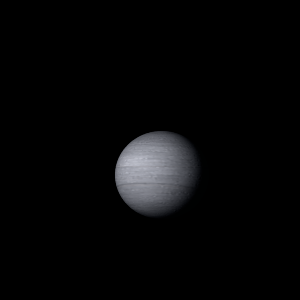|
|
Space Astro
|
Info for exoplanet "Noejot"
| Scientific (actual) data |
|---|
| Planet | WASP-26 b |
| Planet status | Confirmed |
| Planet mass | 1.028 |
| Radius | 1.281 |
| Orbital period | 2.7566 |
| Semi major axis | 0.03985 |
| Orbit eccentricity | 0 |
| Inclination | 82.91 |
| Angular distance | 0.000159 |
| Discovered | 2010 |
| Updated | 2014-07-24 |
| Tzero tr | 2455230 |
| Publication | Published in a refereed paper |
| Detection type | Primary Transit |
| Star name | WASP-26 |
| Right ascension | 4.6° |
| Declination | -15.27° |
| Mag v | 11.3 |
| Star distance | 250 |
| Star metallicity | -0.02 |
| Star mass | 1.12 |
| Star radius | 1.34 |
| Star sp type | G0 |
| Star age | 6 |
| Star temperature | 5950 |
| Wikipedia article | WASP-26 b |
Back
| |
| Fictional info (?) |
|---|
| Suggested name | Noejot |
| Planet type | Hot gas giant |
| The planet is named after the deity Noejot, the demon of chaos.
As seen from WASP-26, in a frame of reference that rotates with the orbital motion, it appears to rotate only once every two years.
Noejot's surface appears heavily rippled and is similar in appearance to the Moon's, indicating that it has been geologically inactive for billions of years.
The carbon monoxide has probably photodissociated, and the free ammonium hydrosulfide (NH4SH) has been swept into interplanetary space by the solar wind because of the lack of a nitric oxide layer.
The volume of water ice in the south polar ice cap, if melted, would be sufficient to cover the entire planetary surface to a depth of 6 meters.
Observations from Earth have shown seasonal change and increased weather activity as Noejot approached its equinox 4 years ago. |
| Atmosphere | Ammonium hydrosulfide (NH4SH) | 78% |
| Helium | 11% |
| Carbon monoxide | 10% |
| Nitric oxide | 0.0047% |
| Atmospheric pressure | 100 bar |
 |
| No known satellites |
| Google search for Noejot |
|
Website by Joachim Michaelis
|
|
|
|